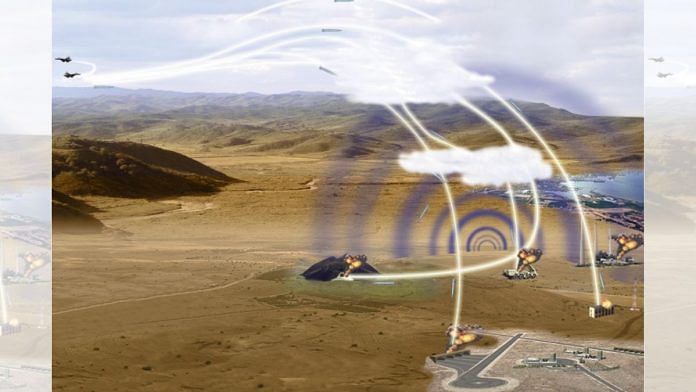New Delhi: Last week, the Indian Air Force (IAF) quietly test fired a quasi-ballistic missile — ROCKS — from the Su-30 MKI, marking a significant increase in India’s ability to target deep inside enemy territory without even crossing its own air space.
Sources in the defence and security establishment confirmed that the test firing was successful.
The missile, a next generation extended stand-off air-to-surface missile, has been designed and manufactured by Israeli defence major Rafael Advanced Defense Systems keeping India’s needs in mind.
It is learnt that the missile is a spin-off from the Sparrow series of air launched ballistic missile targets using capabilities of its Spice series of missiles.
With several components used in the missile being sourced from India, the IAF is looking at placing a larger order under the Atmanirbhar initiative, it is learnt.
The IAF wants the missiles to be manufactured in India.
Sources said the missile, which was incidentally showcased to the world for the first time at the 2019 Aero India in Bengaluru, is a quasi-ballistic missile and has a range of less than 300 km.
Quasi ballistic means that the missile does not fire and perform like a regular air-to-ground weapon system. The pilot of the aircraft can choose the trajectory of the missile to be horizontal or even vertical. It is designed to strike high-value stationary and relocatable targets above ground, or underground, and heavily fortified targets with pinpoint accuracy in GPS-denied arenas.
It can be equipped with either a penetration or blast fragmentation warhead.
Due to the ballistic nature of its flight, its high velocity during the terminal stages of flight would greatly help it penetrate deeper into a target.
Sources said that because of the stand-off capabilities, the missile can also take out modern enemy air defence systems.
Incidentally, the missile was used by the Israeli military to target a S-300 battery of the Iran last week.
Operating autonomously, and launched at an extended stand-off range well outside the areas of heavily-defended surface-to-air threats, ROCKS incorporates technologies inherited from the legacy Popeye and SPICE air-to-surface weapons.
Rafael explains that the pilot allocates a mission for the missile before its release, including target type, coordinates, impact angle and azimuth, topographic imagery data, and fuse delays. The missile is guided to the target by a GPS navigation system, using a homing device and scene matching technology of the target for the final few metres to ensure a precise hit.
An advanced electro-optical (EO) seeker, together with the anti-radiation homing, enables day, night and all-weather operation.
Automatic target acquisition, using a unique scene-matching algorithm and anti-radiation technology, overcomes any GPS jamming scenario, as well as navigation and target location errors, Rafael says.
It adds that the missile can also hit moving targets.
With this, the Su 30 MKIs will have two major missiles on board, the other being the air-to-surface version of the BrahMos supersonic cruise missile.
The IAF already uses several Israeli missiles, including the Spice 2000 used in the Balakot air strike. Another missile, Crystal Maze, was to be fired, too, but could not due to a technical challenge.
(Edited by Zinnia Ray Chaudhuri)
Also read: India 4th highest military spender, China at $296 billion second only to US, says SIPRI report






